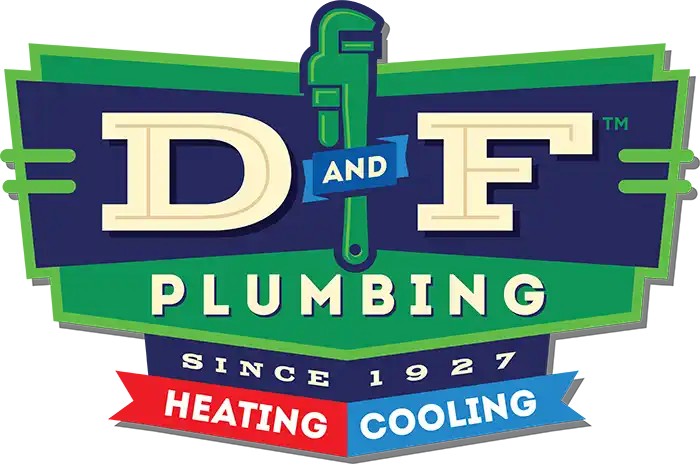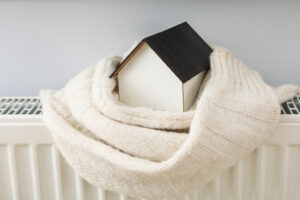A dependable electric water heater is crucial for providing a consistent hot water supply for all your household needs. However, like any home appliance, water heaters have a limited lifespan, and you may eventually need to replace them. Knowing when that time comes is crucial for maintaining your home’s comfort and your family’s well-being. In this article, we’ll outline the top signs that indicate it’s time to replace your electric water heater, helping you make an informed decision about your home’s hot water system.
D&F Plumbing, Heating and Cooling is a trusted choice for electric water heater services in Portland, OR and surrounding areas. With nearly a century of experience backing them, our team of skilled and licensed professionals is committed to providing comprehensive solutions for electric water heaters. Read on to learn the key signs that it’s time for a replacement, and find out how D&F Plumbing, Heating and Cooling can ensure your home enjoys an uninterrupted supply of hot water.
Understanding French Drains
A French drain is a concealed, subsurface drainage system that directs excess water away from your property. It consists of a slightly sloped trench filled with gravel and a perforated pipe at the bottom. When water accumulates in your yard, it seeps through the gravel and enters the pipe, eventually being channeled to a designated discharge point. French drains are an excellent solution for mitigating soil saturation, standing water, and potential basement flooding.
Benefits of French Drains
- Prevents Water Damage: A properly installed French drain can divert excess water away from your home’s foundation, reducing the risk of basement flooding and water damage to your property.
- Promotes Healthy Landscaping: By effectively managing yard drainage, French drains help maintain the health of your landscaping, as excess water can lead to root rot and other plant ailments.
- Reduces Soil Erosion: By controlling water runoff, French drains aid in preventing soil erosion that can occur due to heavy rain or excess irrigation.
- Enhances Property Value: A well-functioning French drain system can increase your property value by providing a reliable and efficient drainage solution.
Planning and Installing a French Drain
- Assess Drainage Needs: Before beginning the French drain installation process, assess your yard to identify the areas prone to standing water or soil saturation.
- Determine Discharge Location: Choose a suitable discharge point for the drain, such as a storm sewer or a low-lying area on your property. Ideally, the discharge location should be at least several feet away from your home’s foundation to prevent water damage.
- Lay Out the Drain Path: Mark the path of the drain from the problem area to the designated discharge point. Depending on your property’s size and layout, the drain may need to be installed along your property line or around the perimeter of your house.
- Dig the Trench: Keeping in mind the slope, excavate a trench along the marked drain path. The trench should be approximately 9 to 12 inches wide and 18 to 24 inches deep.
- Slope the Trench: For adequate water flow, the bottom of the trench should have a slope of around 1 to 3 inches per 10 feet. Use a level and measuring tape to ensure the correct sloping.
- Install Landscape Fabric: Line the trench with landscape fabric to prevent soil from filling the gravel and pipe over time. This step helps maintain the integrity and functionality of the drain.
- Add Gravel: Add a 3-inch layer of coarse gravel to the bottom of the trench. The gravel should be approximately 0.5 to 1.5 inches in diameter for optimal performance.
- Install the Perforated Pipe: Lay the perforated pipe, holes facing down, in the trench on top of the gravel bed. The downward-facing holes ensure proper water flow into the pipe.
- Wrap and Fill: Fold the landscape fabric over the perforated pipe and fill the rest of the trench with gravel, leaving a few inches of soil depth for planting grass or other ground cover.
- Restore Ground Cover: Plant grass or other appropriate ground cover to conceal the gravel and complete the installation process.
Maintaining Your French Drain
- Regular Inspections: Inspect your French drain periodically to ensure proper functioning, particularly after heavy rainfall or seasonal changes. Look for signs of water pooling near the drain or discharge point, as this may indicate a potential blockage.
- Clean the Surface: Keep the drain’s surface clear of leaves, sticks, and other debris to ensure sufficient water flow through the gravel and into the perforated pipe.
- Pipe Cleaning: When necessary, use a plumber’s snake or high-pressure water jetting to remove any accumulated debris or sediment from the pipe. Our professional plumbers at D&F Plumbing, Heating and Cooling can provide thorough pipe cleaning services.
- Tree Maintenance: Regularly trim and maintain trees near your French drain to minimize root intrusions, which can disrupt the drain’s functionality.
- Discharge Assessment: Check the drain’s discharge point after heavy rainfall to ensure the proper flow of water and address any potential blockages or erosion issues.
Addressing Common Issues with French Drains
- Clogged Pipes: Over time, sediment, debris, and root intrusions can impede water flow in the perforated pipe. Regular maintenance, inspections, and proper tree care can help prevent clogging issues in your French drain system.
- Drainage Path Obstructions: Ensure the drainage path remains unobstructed and free of debris, such as fallen leaves, branches, or sediment buildup. Regularly inspect the drain and clear away any obstructions to maintain efficient water flow.
- Insufficient Drain Sloping: If your French drain isn’t correctly sloped, the water may accumulate and become stagnant, causing unpleasant odors and potential pipe damage. Consult one of our professional plumbers to assess and adjust the slope as needed.
- Inadequate Drain Depth: A French drain that is too shallow may not collect and divert water as efficiently as needed. Ensure your trench is deep enough to accommodate the volume of water your property typically experiences.
Protect Your Property with Expert French Drain Solutions
French drains serve as a reliable and effective solution for managing excess water in your yard, helping to prevent water damage, maintain healthy landscaping, and enhance property value. With thorough planning, careful installation, and proactive maintenance, French drains can protect your property from potential drainage issues for years to come.
Entrust the professionals at D&F Plumbing, Heating and Cooling in Portland, OR, and surrounding areas to ensure your French drain installation and maintenance are performed with precision and quality. As experts in the field, D&F Plumbing, Heating and Cooling will work diligently to provide a tailored drainage solution for your unique property needs. Don’t let yard drainage issues disrupt your home – contact D&F Plumbing, Heating and Cooling today for a consultation and secure the peace of mind that comes with an expertly installed and maintained French drain system.




